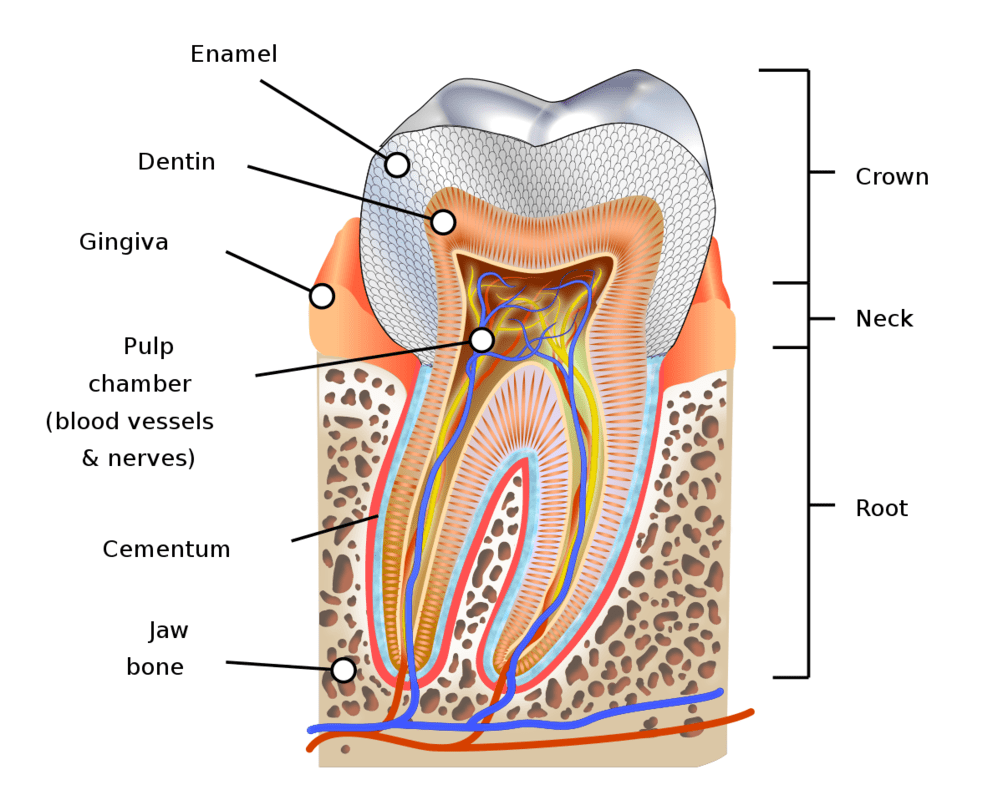What is a Root Canal?

What is a Root Canal?
If you are considering getting a root canal, you need to understand what it is and how it works. Root canals are dental procedures that remove dead and dying tissue and bacteria from inside the tooth. They are common dental procedures and are usually covered by dental insurance. While root canals can be uncomfortable, they can help save a tooth from extraction or worse.
Root canals are a dental procedure to restore a tooth
Root canals are dental procedures that restore a tooth by removing the infection from the tooth’s center. This process prevents bacteria from spreading and causing further decay of the tooth. It also restores the tooth’s function and helps preserve the natural tooth.
Root canal therapy begins with an appointment at a dental practice. An anesthetic is applied to the area, and a rubber dam is placed over the mouth. The dentist then drills a small hole in the crown of a tooth to access the pulp chamber. Next, the dentist removes the pulp, bacteria, and decayed nerve tissue. Once the pulp is removed, the Root canals are cleaned and disinfected. A temporary dental filling is then placed over the tooth to protect it from further infection.
After a root canal, the tooth may feel tender for a few days. However, over-the-counter pain relievers and prescription painkillers can be taken to ease pain and swelling. You should also be aware that the tooth may feel different from the other teeth. If you experience any severe discomfort, call the dentist immediately.
Root canals are a dental procedure used to restore a tooth after decay or an injury. The procedure is usually done in a dental office. Before the procedure, the dentist will review your X-rays and examine the tooth. The dentist will then administer a local anesthetic to numb the area around the tooth. You will feel a mild pinch and some burning. The anesthetic will prevent the tooth from moving during the procedure.
A root canal is needed if you have an infected tooth. An infected tooth is very painful and will not heal on its own. It will only get worse if you leave the tooth in your mouth.
They remove bacteria and dying or dead tissue from inside the tooth
A root canal is an important dental procedure, which is designed to save a tooth and remove bacteria and dead tissue. A root canal is needed when bacteria and dead tissue have infected the pulp inside the tooth. This can happen as a result of a severe cavity or injury. The process helps restore the teeth and remove oral pain.
A tooth that needs a root canal is often red, swollen, and painful when you bite down or apply pressure to it. It may also be sensitive to extreme temperatures. An untreated infection can also cause pus to build up in the root. The pus may then form an abscess. This can damage the jawbone and the surrounding gum tissue. The tooth may also become dark and discolored.
The first step in a root canal procedure is to examine the tooth by taking an X-ray. The X-ray will show the shape of the root canals and any signs of infection in the bone surrounding the tooth. The next step is to numb the area surrounding the tooth. In some cases, anesthesia is not required. However, it can make the procedure more comfortable for the patient.
Further Details
Once root canal procedures are complete, a patient will need to maintain good oral hygiene at home. It is important to brush twice a day and to floss between teeth once a day. Regular dental cleanings and exams are also essential. Some people will need additional visits after a root canal to ensure that the root canal treatment is working properly.
If a patient has a deep infection, a root canal may be the best option. Deep decay, large fillings, or repeated dental procedures can cause the pulp inside the tooth to become infected with bacteria. When the bacteria build-up, the infection can lead to an abscess. An abscess is a deep pocket of pus that can lead to severe discomfort and bad breath.
They are painful procedures
If you have a toothache, you should see a dentist as soon as possible. If the pain is severe, it can affect your daily routine. Your dental team can quickly schedule an appointment to perform root canal therapy. They can also check for any complications. After the procedure, you may experience some mild discomfort, but you can rest assured that the infected tissue has been removed.
While some people are frightened about the pain, root canal procedures are not that painful. A local anesthetic will be used to numb the area. The dentist will still have to clean the inside of your tooth, which can cause some pain. This is only normal because the root of your tooth contains nerves and blood vessels.
If you are suffering from a toothache, you may need to have root canals performed. While these procedures are generally not painful, the pain associated with them is often felt when you chew. Therefore, you should avoid putting off the procedure until the pain is severe. By seeking treatment early, you can avoid the pain and reduce the severity of the infection.
Root canal therapy can be an effective way to save a tooth. It involves removing the infection and shaping and filling the tooth’s nerve chambers. The procedure can also be effective for people with tooth pain. The process is usually quick, and one visit is all that is needed. However, you should consider your comfort level before scheduling a root canal appointment.
While root canals are generally painful procedures, most people say they’re no more painful than fillings. Many patients also report that the pain is minimal.
They are covered by most insurance plans
Dental insurance is an important part of any dental plan, but root canals are not always covered. Most dental insurance plans pay only a percentage of the cost. For example, many will cover 100 percent of the cost of cleaning and diagnosis, but they won’t pay anything for a root canal. In addition, dental insurance plans often have a waiting period before they will cover your treatment. This waiting period can last from a few months to a year, depending on the plan.
Most dental insurance plans cover root canals in some cases. However, some policies only cover preventative care and don’t cover these procedures at all. In such cases, you should contact your dental insurance provider to learn more about your benefits. Some insurance companies may also cover portions of the cost of a dental crown, so you should make sure to contact your insurance provider to find out what type of coverage you have available.
While the pain of a root canal isn’t painful for most people, the procedure can be expensive, which is why dental insurance is a great way to cover the costs. Many insurance policies cover a portion of the cost of root canals, so you don’t have to pay the full price. Paying out of pocket for a root canal can be very expensive, especially if you need to have several teeth treated.
However, it is important to keep in mind that the procedure may cost you several hundred dollars. Additionally, you may have to pay even more for a crown to protect the tooth. A crown can easily cost up to a thousand dollars. You should always check with your insurance company to see if they cover root canals.
They cost less than tooth removal
Root canals are a common treatment for a number of tooth problems. They involve removing the damaged, infected part of a tooth while leaving the healthy parts intact. Root canal therapy was invented in order to save teeth from extraction due to a variety of reasons, including tooth decay and gum disease. Modern technology allows dentists to use laser dentistry and oral or IV sedation during root canal treatments. The process involves the removal of diseased tissue from the inner chamber of a tooth and filling the space with an elastic material and medication that will prevent infection. The healthy portion of the tooth is then restored with a crown.
In some cases, root canals cost less than tooth removal. The cost depends on the extent of the cavity and the difficulty of repairing it. Early treatment is important as it reduces the risk of infection and makes the cavity-filling process easier. Often, if a cavity has not been treated in time, it can lead to an even more severe infection. A tooth that has been left untreated for an extended period of time may also require a crown, causing more expense.
Root canal procedure cost
If you don’t have dental insurance, the root canal procedure may cost a few hundred dollars. A crown, which is a protective covering for a tooth, may cost as much as a thousand dollars. Many dental offices offer payment plans or deals to help people cover the expense. Some dentists perform root canals in one session, while others may require multiple visits to completely remove the infection. Additionally, a root canal procedure will likely require you to miss a few days of work.
Fortunately, most dental insurance plans will cover the cost of root canal treatment. However, you may need to meet a deductible or annual dollar limit before you’re reimbursed. Your dental insurance carrier will contact your dentist to see if your plan covers the cost of a root canal procedure. For any Further Details Please Check This Site.
If you’re considering getting a root canal but don’t know where to start, doing an internet search for a phrase like “dentist near me Tarzana” should give you some directions.







